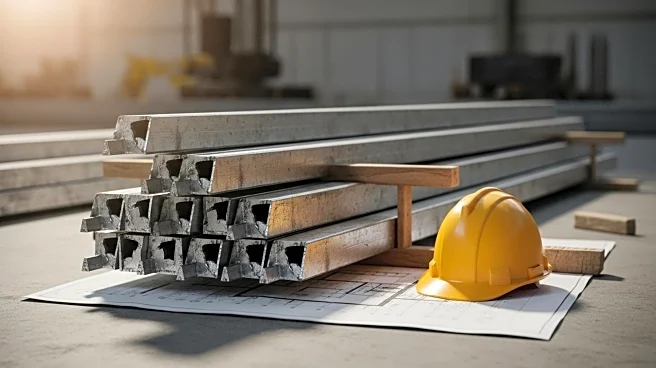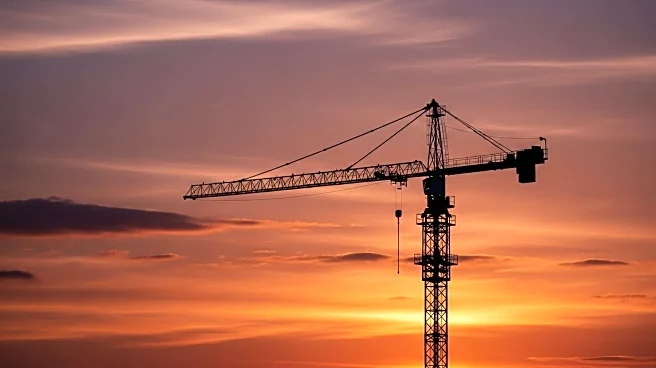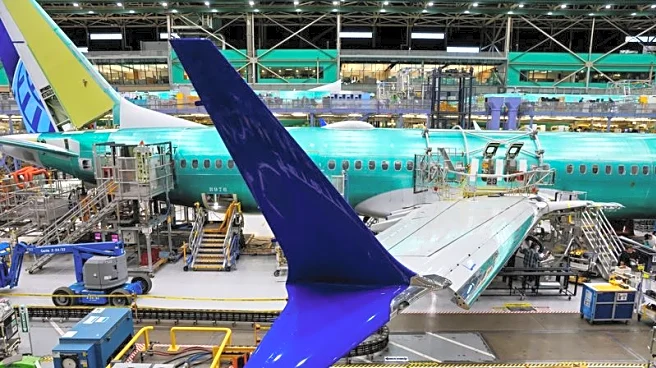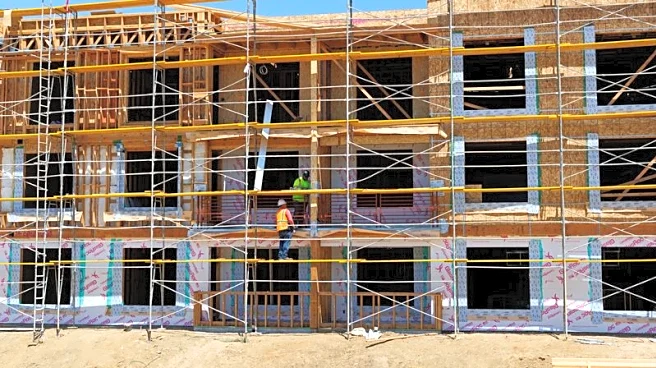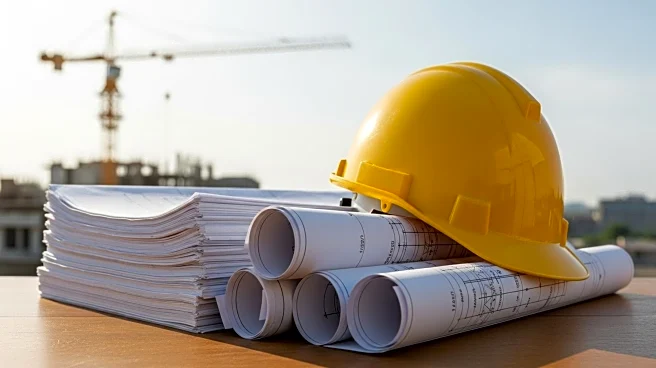What's Happening?
Nonresidential construction spending in the U.S. has decreased by 0.2% in July, reaching a seasonally adjusted annual rate of $1.24 trillion, according to an analysis by the Associated Builders and Contractors of U.S. Census Bureau data. Private nonresidential outlays dropped by 0.5%, while public nonresidential construction saw a slight increase of 0.3%. The decline marks the third consecutive monthly decrease, with tariffs and labor shortages contributing to the downturn. The Associated General Contractors of America reported that 16% of contractors experienced project cancellations or delays due to tariff impacts, while 45% faced labor-related delays.
Why It's Important?
The decline in nonresidential construction spending is a critical indicator of challenges facing the construction industry, including rising costs and labor shortages. These factors can hinder the ability of developers to launch new projects, affecting economic growth and employment in the sector. The construction industry is a significant contributor to the U.S. economy, and disruptions in spending can have ripple effects on related industries and job markets. Addressing tariff uncertainties and labor shortages is essential for stimulating demand and ensuring the stability of construction activities.
What's Next?
The construction industry may face continued challenges if tariff rates remain uncertain and labor shortages persist. Stakeholders, including contractors and policymakers, may need to implement strategies to mitigate these issues, such as advocating for policy changes or investing in workforce development. The industry will also be monitoring public nonresidential spending, which has shown resilience, as a potential buffer against private sector declines. Future construction spending trends will depend on economic conditions, policy decisions, and the ability to address ongoing challenges.


